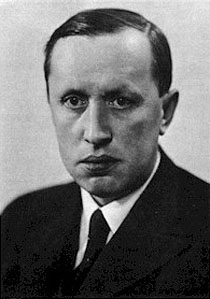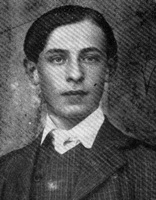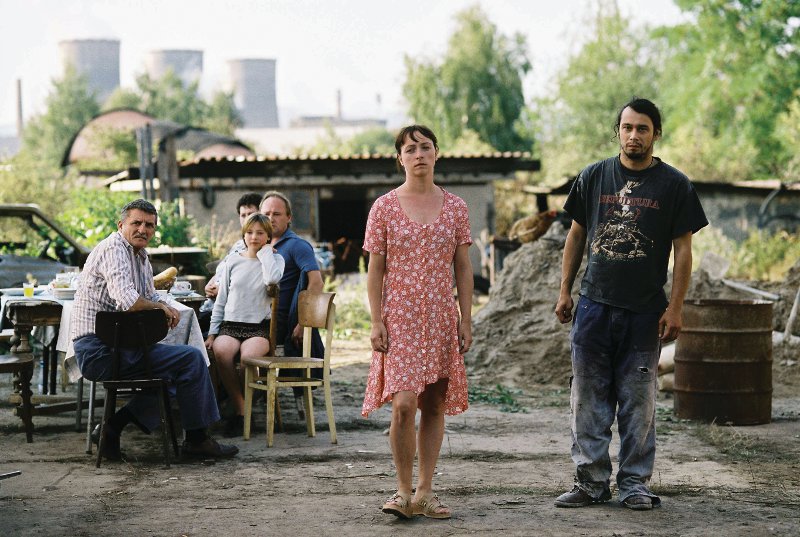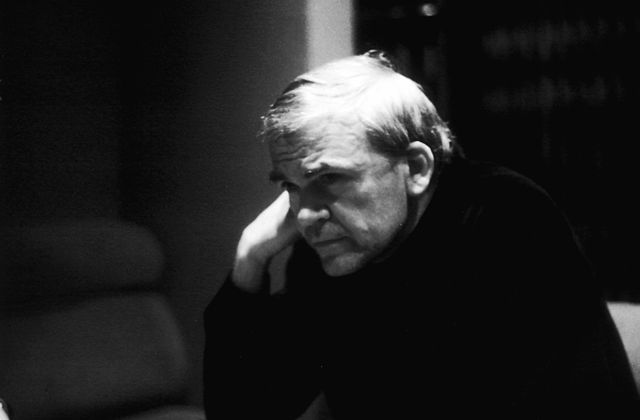„War with the Newts” by Karel Čapek and „Kosmas” by Vladislav Vančura are at the first sight very different works. The first one is a classic Science-Fiction book, written in very modern language and using original narrative modes, while the second one is a tale of old times, told in strongly archaized language. However, both works are the examples of the experiments in literature, influenced by the interwar avant-garde movements, with intention to bring novelties and shock the reader.

Both works were written in 1930’s under the shadow of the Nazi thread to the Europe. This essay’s aim is to analyze both and to prove that both works are not as dissimilar as it might look at first glance.
Karel Čapek’s “War with the Newts” is “based on scientific inventions and/or rational plans for industrial productivity”1 but the inventions and plans lead to a disaster. The clear analogy could be drawn here to the National Socialist regime in Nazi Germany, where technical superiori
ty was constructed at the expense of the races considered by Nazi ideologists as inferior. But anti-Nazi notions are clearly visible on the other levels. In a chapter four of the Third Book the ideology of German Baltic Newt, the über-Newt, superior to the Newts grown by other nations is ridiculed to the level of the comedy2.
Vladislav Vančura was also a great opponent to the Nazi ideology. Just like Čapek, he considered it to be “malicious epidemic, which had to be fought against3”. He had chosen, though, different way to oppose it. Unlike author of “War with the Newts” he chooses to more actively opposing the threat – he “took part in many public gatherings, signed all kinds of manifestoes and appeals”4. He came with the idea of raising national awareness and fanning the coals of patriotism among the Czechs, but also played with some myths about history, commonly spread among Czechs. “Pictures from the History of the Czech nation”, his never finished works constructed of the stories from the notable moments of Czech history, were about to become for Czechs in occupied Czechoslovakia what just fifty years earlier works of Henryk Sienkiewicz5 and Józef Ignacy Kraszewski6 were for Poles struggling under three foreign powers.
“Kosmas” is a part of this work. The story of the Prague monk from the beginnings of the Czech history is used by Vančura to ask questions about the nature of the man: what that means to be a man, what drives him and what gives him direction7. But apart of the theme of his book, the real mastery of the Kosmas shows in its language. Just as his Polish predecessors, Vančura had put much effort to archaization of the language in attempt to make it as close as possible to the antic biblical Czech. As a result of these successful attempts his works are almost untranslatable8, and as a result he stayed relatively unknown author outside Czech Republic. Despite that his works were quite difficult to read, Vančura attracted many readers, who remained faithful to him, despite that “some of their sentences look as if they were torn out from the past and planted in the present time.9”
On the other hand, “Čapek’s style is thoroughly modern, skillfully using various resources of contemporary spoken Czech10”. That allowed his works to be widely translated to many languages and for him to became world-famous writer. His influences are visible in works of later science-fiction authors such as Ray Bradbury or Stanisław Lem. In “War with the Newts” he uses very rich arsenal of narrative tools, he differentiates narrators and even uses non-belletristic forms of narrative such as quotes from the press, transcripts from the official meetings and speeches, telegrams etc. This is a revolutionary step in the literature: many science-fiction writers before him tried to add credibility to their stories by referring to some press news articles (like for example Jules Verne in his “Robur the Conqueror” did11) but Čapek’s form of semi-scientific book with direct quotes, reproductions, footnotes etc. was at this time a novelty. For the most of the book, the author, despite many stylistic games when he gives voice to some other characters, tries to show the story of the Newts in a way that could be learned by the objective observer emerged in the world of the book. The style of the book resembles a popular science book. It’s only the last chapter when the narrative changes and it takes a form of a dialog between “the narrator” and “the author”, who discuss possible endings to the story and consequences for the mankind.

The narration of Vančura is more subjective. The narrator not only tells the story but engages in it, together with the reader asking questions like in following example: “(…) stařec mluvil hlasem umírajícícho a zvuk jego řeči zanikal v chrapotu a pomlkách. O čem však chtěl mluvit? To je nesprávná otázka ((…)the old man was speaking with the voice of dying and the sound of his voice was lost in hoarseness and pauses. But what he wanted to speak about? This isn’t a right question)”12 Vančura’s style resembles less than Čapek’s the transmission of information by the various written sources but rather answers to the ancient linear storyteller traditions. While in “War with the Newts” the flow of information is disrupted by reprints, footnotes and inserts of documents, the narrator in “Kosmas” interacts with the reader in the way the grandmother who tells story to the children interacts with them. As shown on the example above, not only helps to asks the question the reader/listener would ask, but also engages further by evaluation of this question. This, together with the stylistic, was something new in the literature: the story was not just simply told, but it created a “poetic world”13. Still, due to difficult language, “more difficult to translate than to translate poetry14”, the works of Vančura did not became popular outside Czechoslovakia, although some movie adaptations (notably Markéta Lazarova) became quite popular abroad15 .
The works of Karel Čapek are completely different story. Widely translated they became popular both in Europe and in USA and became very influencing to the science-fiction genre. His works often revolved about the vision of the world bring at the edge of the disaster by mankind and its pursuit for some utopian, perfect word. “War with the Newts” is one of the books exploiting that subject, which influenced future authors. The most notable example will be “The Martian Chronicles” by Ray Bradbury, in which the mankind in pursuit for the utopian vision of perfect world undertake colonization of the Mars. Eventually, after bringing it’s native inhabitants to extinction, the fate of the humanity is hanged in the balance when the nuclear war destroys the Earth and the few refugees who landed on Mars become the only humans survived16. The issue present in the “War with the Newts” is also exploited by Russian science-fiction authors, Strugacky brothers in their book “Limping fate”. In that book people also have to deal with new species, this time a result of some mystery mutation in human genome. As in Čapek’s book the new species possess some unique abilities and therefore people try to use them for their own benefit. But due to differences between the two, they are unable to understand them and fail to see oncoming revolution of the mutants17.
Theme of difficulty, if not impossibility of understanding between the two intelligent species is a recurring element of the works of Polish Science-Fiction author, Stanisław Lem. From his earlier works, such as “Man from Mars”, Lem’s fist book dealing with the issue of contact with extraterrestrial being18, through his masterpiece “Solaris”19 to his last novel, 1987 “Fiasco”20 he tries to answer the question that emerges from the Čapek’s work: is it possible to establish contact with different civilization, different species? Both Lem and Čapek are far from being optimistic when it comes to answering that question and for both the biggest obstruction lies in the very nature of mankind.
Lem is just one of the many authors influenced in various ways by Karel Čapek’s works, but his work is a good example of how important author of “War with the Newts” was to the world Science-Fiction literature. Čapek’s influences on Lem does not end only in the themes of his work. Lem was also influenced by his revolutionary style of narration, utilizing various forms of narratives, in his stories he often uses forms of the transcripts from court meetings and investigations21, he is not afraid to quote imaginary newspaper articles and scientific work or he goes to such extreme as to write a set of reviews of non-existent books22. He is also not a stranger to the Čapek’s surrealistic humor – just to mention “The Futurologistic Congress”.
In this essay I attempted to show that despite differences on the surface, both books are examples of the revolutionary approach to the narrative structure, which changed the way the book is received by the reader. Karel Čapek abandoned traditional ways of telling the story and replaced it with his new “story-telling devices23”. And it is these narrative techniques that enabled change from just telling the story to creating the new universe inside the book. Vladislav Vančura in his works chooses opposite direction and instead of looking into the future, he occupied himself with the past, yet the above statement can be true for both of the authors. “Kosmas” is also a good specimen of the new style of narration, and thanks to his linguistic stylisations and interaction with the reader, reading Vančura’s historical works reader can not only be recipient of the relation, but is enabled to submerge into the world created by the author. Thanks to this, the modern prose fiction was enabled to join other arts in “striving for new aesthetic ideal24” and finally free itself from its XIX century frames.
1Herbert Eagle “Čapek and Zamiatin – Versions of Dystopia” in Makin, Toman (ed.) “On Karel Čapek”, Michigan Slavic Publications, Ann Arbor 1992, p. 31
2Karel Čapek “War with the Newts”, translated by M. & R, Weatherall, Northwestern University Press, Illinois 1987. pp. 277 and next
3http://www.radio.cz/en/section/czechs/vladislav-vancura accessed 19/03/2012 23:22
4loc. cit.
5http://www.literatura.net.pl/opracowania/Sienkiewicz.htm accessed 20/03/2012 00:02
6http://literat.ug.edu.pl/autors/kraszew.htm accessed 19/03/2012 23:52
7Otakar Chaloupka, afterword to Vladislav Vančura “Kosmas / Markéta Lazarova”, Mladá Fronta, Praha 1987, p. 160
9loc.cit.
10Lubomír Doležel “Narrative modes in Czech Literature”, University of Toronto Press, Toronto and Buffalo 1973 p. 99
11http://www.gutenberg.org/files/3808/3808-h/3808-h.htm accessed 12/03/2012 15:18
12Vladislav Vančura “Kosmos / Markéta Lazarova”, Mladá Fronta, Praha 1987, p. 28
13Lubomír Doležel “Narrative modes in Czech Literature”, University of Toronto Press, Toronto and Buffalo 1973 p. 111
15loc. cit.
16Ray Bradbury “Kroniki Marsjańskie”, Prószyński i S-ka, Warszawa 1997.
17Арка́дий and Бори́с Струга́цкий “Kulawy Los”, Wydawnictwo Amber, Warszawa 1999
18http://solaris.lem.pl/ksiazki/beletrystyka/czlowiek-z-marsa/64-poslowie-mars accessed 20/03/2012 18:20
19Stanisław Lem “Solaris”, Wydawnictwo Literackie 1976
20http://solaris.lem.pl/ksiazki/beletrystyka/fiasko/73-poslowie-fiasko accessed 20/03/2012 17:59
21See “Roly-Poly”, “The Inquest” from “Tales of Pirx the Pilot” and others.
22http://solaris.lem.pl/ksiazki/apokryfy/biblioteka21wieku/153-poslowie-apokryfy accessed 20/03/2012 20:12
23Lubomír Doležel “Narrative modes in Czech Literature”, University of Toronto Press, Toronto and Buffalo 1973 p. 111




